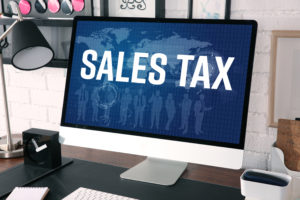The Research and Development Tax Credit: Claim What You Deserve
The Research and Development Tax Credit: Claim What You Deserve
By Shane T. Frank
Many manufacturers are not aware that federal and state research and development (R&D) tax credit programs exist that may reward their day-to-day efforts aimed at producing a more efficient product.
The Research and Development Tax Credit is a government-sponsored benefit that provides cash incentives for companies conducting R&D in the U.S. These economic incentives are conservative, government sponsored programs backed by the Internal Revenue Service, Congress and the current administration in order to stimulate research and development in industries of all sizes, to encourage companies to work together and to transform the economic landscape.
More than $5 billion in federal R&D tax credit benefits are given out annually.
Recent changes to IRS regulations now provide greater opportunities for small- and mid-sized companies to qualify for the credits.
The R&D Tax Credit has existed since 1981, however, prior to December 2001, the requirements necessary to qualify for it were rather difficult to attain.
In late 2001, the Bush Administration issued proposed IRS regulations which apply retroactively and have made it significantly easier to qualify for credits. Specifically, the new regulations have relaxed the documentation required to support the credit and eliminated the discovery test.
In January 2004, the IRS ratified these new regulations, which have opened the door for eligible taxpayers to “look back” for potential refund claims for credits for which the taxpayer was unaware.
The new regulations coincide with the intent of Congress, are much more taxpayer friendly and reflect a profound change in the IRS’s position. The new regulations make it easier for a broader array of companies to qualify their activities as R&D and provide flexibility in certain recordkeeping requirements.
Redefining R&D
Many taxpayers tend to regard R&D as an activity associated solely with hi-tech, biotech and pharmaceutical companies. Prior to the relaxed regulations, there was some truth to this perspective.
The former regulations required that a company obtain knowledge that exceeds, expands or refines the common knowledge of skilled professionals. This essentially required that the company develop a product or process that was unique in the world. At present, this requirement has been eliminated since there was no indication that Congress intended such interpretation.
A company must now develop a new or improved business component that is based on technology grounded in the physical sciences (i.e. engineering principles, biology, chemistry, computer science, etc.). However, with the relaxed regulations finalized and extended by the current administration, the definition of R&D is broader and, in fact, companies in the tooling, mold and die industries are prime candidates for the credit.
Firms involved in any of the following activities may also be eligible to claim the R&D tax credit:
Manufacture of products;
Development of new, improved or more reliable products/processes/formulas;
Development of prototypes or models (including computer generated models);
Design of tools, jigs, molds and dies;
Development or application for patents;
Certification testing;
Testing of new concepts and technology;
Development of new technology;
Attempted use of new materials;
Acquiring new equipment;
Environmental testing;
Development or improvement of production/manufacturing processes;
Development, implementation or upgrading of systems and/or software;
Development of production control software;
Improvement or building of new manufacturing facilities;
Automation/streamlining of internal processes; and
Expending resources on outside consultants/contractors to do any of the above stated activities.
As the extensive list of qualifying activities illustrate, the new changes afford a broad segment of companies opportunity to qualify for the R&D credit.
Many companies, however, miss out on qualified R&D expenditures in areas such as manufacturing, engineering, quality assurance, marketing, purchasing and information technology. Many firms tend to regard their efforts to make new, lighter, stronger, cheaper, more reliable products, or to design more precise, more economical and more versatile processes as “just doing my job” when, in fact, they have also been performing R&D-qualifying activities.
Taking Advantage of the R&D Tax Credit
The R&D Tax Credit opportunity can provide, among other things, a hidden and immediate source of cash for many small- and mid-sized companies and a significant reduction to current and future years’ federal and state tax liabilities.
The R&D credit is largely based on an allocation of labor costs that are attributable to the above-mentioned qualifying activities. Often — especially in privately owned companies — an employee’s title is not indicative of whether his or her time is spent on R&D activities as individuals tend to wear many hats. Identifying and documenting the R&D credit can be complex but the results can be well worth the analysis.
Companies that have qualifying R&D activities are entitled to a 20-percent research tax credit, subject to certain limitations for previous years. The credit offsets taxes owed or paid, dollar for dollar, which is much more powerful than a standard deduction, which only reduces a company’s taxable income.
Further, a business can obtain the credit for all open tax years — generally the last three or four years plus the current year. Additional years’ eligibility may be available if the taxpayer is in a net operating loss or alternative minimum tax position. If a company is not in a refund position, the tax credits may carry forward for up to 20 years. Additionally, a firm may be able to expense all such costs in the year incurred.
Practically speaking, there is a three-step process to explore this opportunity. First, an evaluation of whether you qualify and a broad determination of credit potential should be conducted. Second, conduct a tax analysis of your firm’s ability to use the credits (i.e. past, present, future). And third, quantify and document the credits and file the amended returns, if necessary.
The U.S. offers some of the world’s richest R&D tax incentives but chances are companies have not taken advantage of them to get the cash they deserve. As the pace of business accelerates and competition increases, small- to mid-sized manufacturers may be more likely to overlook this source of cash because many lack the time, resources or expertise needed to identify and manage R&D tax credit claims.
The government has intentionally broadened the scope of businesses which may benefit from the tax credit in order to stimulate the economy and reward those who undertake to make their chosen field more efficient, safe and innovative.
Manufacturers continually participate in these activities simply to remain competitive without realizing that their daily operations may also entitle them to tens of thousands of dollars in tax credits.
Shane T. Frank is managing director at the Houston Texas headquarters of alliantgroup, LP, a national professional tax services firm. He may be reached at 713-877-9600 or shane.frank@alliantgroup.com
We hope you found this article about “The Research and Development Tax Credit: Claim What You Deserve” helpful. If you have questions or need expert tax or family office advice that’s refreshingly objective (we never sell investments), please contact us or visit our Family office page or website www.GROCO.com.
To receive our free newsletter, contact us here.
Subscribe our YouTube Channel for more updates.

Alan Olsen, is the Host of the American Dreams Show and the Managing Partner of GROCO.com. GROCO is a premier family office and tax advisory firm located in the San Francisco Bay area serving clients all over the world.
Alan L. Olsen, CPA, Wikipedia Bio

GROCO.com is a proud sponsor of The American Dreams Show.

The American Dreams show was the brainchild of Alan Olsen, CPA, MBA. It was originally created to fill a specific need; often inexperienced entrepreneurs lacked basic information about raising capital and how to successfully start a business.
Alan sincerely wanted to respond to the many requests from aspiring entrepreneurs asking for the information and introductions they needed. But he had to find a way to help in which his venture capital clients and friends would not mind.
The American Dreams show became the solution, first as a radio show and now with YouTube videos as well. Always respectful of interview guest’s time, he’s able to give access to individuals information and inspiration previously inaccessible to the first-time entrepreneurs who need it most.
They can listen to venture capitalists and successful business people explain first-hand, how they got to where they are, how to start a company, how to overcome challenges, how they see the future evolving, opportunities, work-life balance and so much more..
American Dreams discusses many topics from some of the world’s most successful individuals about their secrets to life’s success. Topics from guest have included:
Creating purpose in life / Building a foundation for their life / Solving problems / Finding fulfillment through philanthropy and service / Becoming self-reliant / Enhancing effective leadership / Balancing family and work…

MyPaths.com (Also sponsored by GROCO) provides free access to content and world-class entrepreneurs, influencers and thought leaders’ personal success stories. To help you find your path in life to true, sustainable success & happiness. It’s mission statement:
In an increasingly complex and difficult world, we hope to help you find your personal path in life and build a strong foundation by learning how others found success and happiness. True and sustainable success and happiness are different for each one of us but possible, often despite significant challenges.
Our mission at MyPaths.com is to provide resources and firsthand accounts of how others found their paths in life, so you can do the same.
Which Tax Extensions Will Affect Your 2014 Return?
Are You Ready for Your 2014 Taxes? Although many people might answer yes to that question, the fact is taxpayers can only do so much as long as Congress is dragging its feet on several expired tax extenders. The fact that these extenders are still sitting in limbo is nothing new. It happens almost every…
So-Called Temporary Recession Tax Not So Temporary
Remember the great recession of 2009? Although the recession may now be a thing of the past, some so-called “temporary” taxes are having a harder time fading into the background. That’s because many states throughout the country are still collecting on tax bills that were enacted solely for the purpose of refilling public reserves. Fourteen…
Congress Not Looking to Pass Internet Sales Tax Anytime Soon
Ever since the Internet became a worldwide sensation, there have been those who think it should be taxed, especially Internet sales from state to state. Taxing the Internet would be a huge source of extra revenue for the government, but for those who use the Internet to shop (which is just about everyone these days),…
NBA Stars Losing Hefty Amounts of Their Salary to the Taxman
Just about everyone knows that professional athletes make a ton of money. Whether you agree with athlete salaries or not, the fact is those hefty numbers you always see reported when an athlete signs a new deal aren’t really all that they’re cut out to be. Oh sure, they are making a lot of money,…




